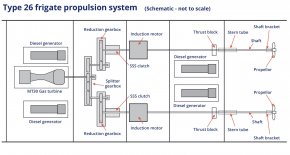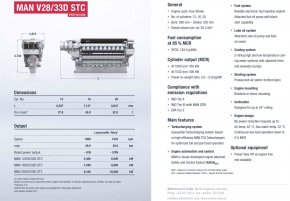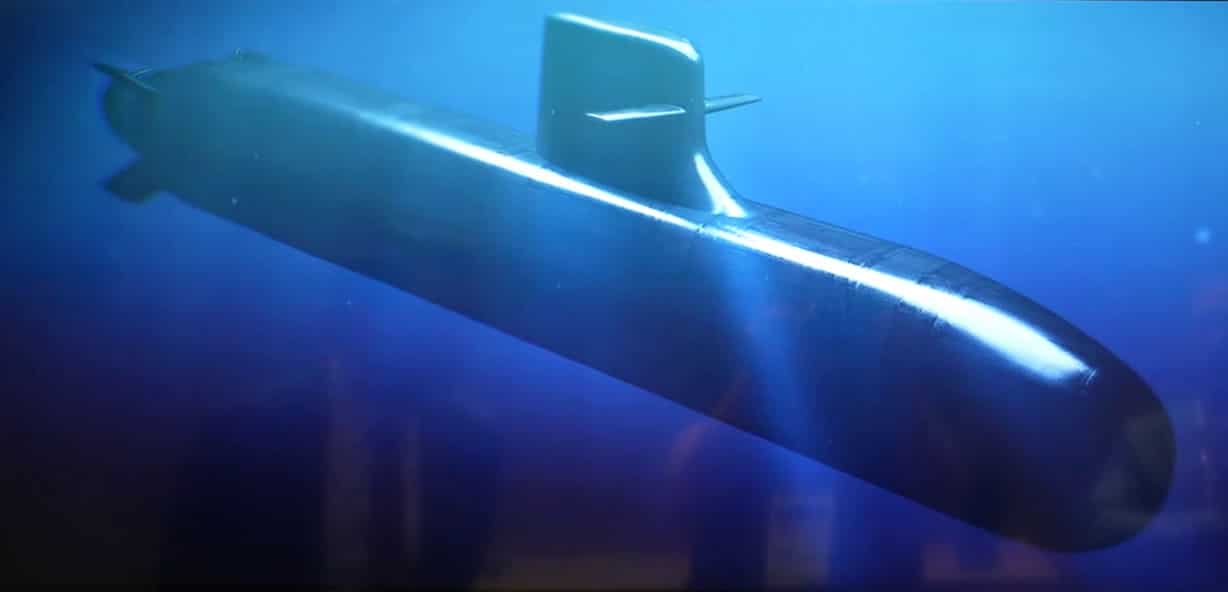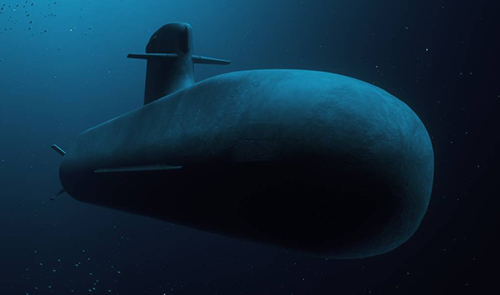Going Boeing
Well-Known Member
The main difference is the diesel engines. The Hunters will have 4 diesel engines (MTU Type 20V 4000 M53B) plus one MT30 whereas the Mogami has 2 diesel engines (MAN Diesel 12V28/33DD STC) plus one MT30. When you take into account that the Hunter’s four 20 cylinder MTU diesels produce more power than the two 12 cylinder MAN’s in the Mogami, the Hunter will have more electrical power for systems and propulsion.A quick question about the MT30 naval turbine. Are there different versions? I ask as I see the Mogami at 4000+ tons and the Hunter at 8000+ tons both include 1 of these as part of their propulsion. Does this mean the Mogami is overpowered or the Hunter is underpowered? Am I missing something?
This article shows the Type 26 drivetrain with the MT30 directly driving both shafts via splitter and reduction gearboxes and assisted by electric (induction) motors powered by up to 4 diesel generators.


Courtesy of https://www.google.com/url?sa=t&rct=j&q=&esrc=s&source=web&cd=&ved=2ahUKEwiJg_LTp_-EAxV2YvUHHZP0CP0QFnoECDMQAQ&url=https://s3.us-west-2.amazonaws.com/linquip.equipment/72171/equipment_72171_catalog_66567228f27949460718dc50f1a4c157db5ef754.pdf&usg=AOvVaw0lPBu_gKs_pjqWJF87Uu4v&opi=89978449
Last edited:




